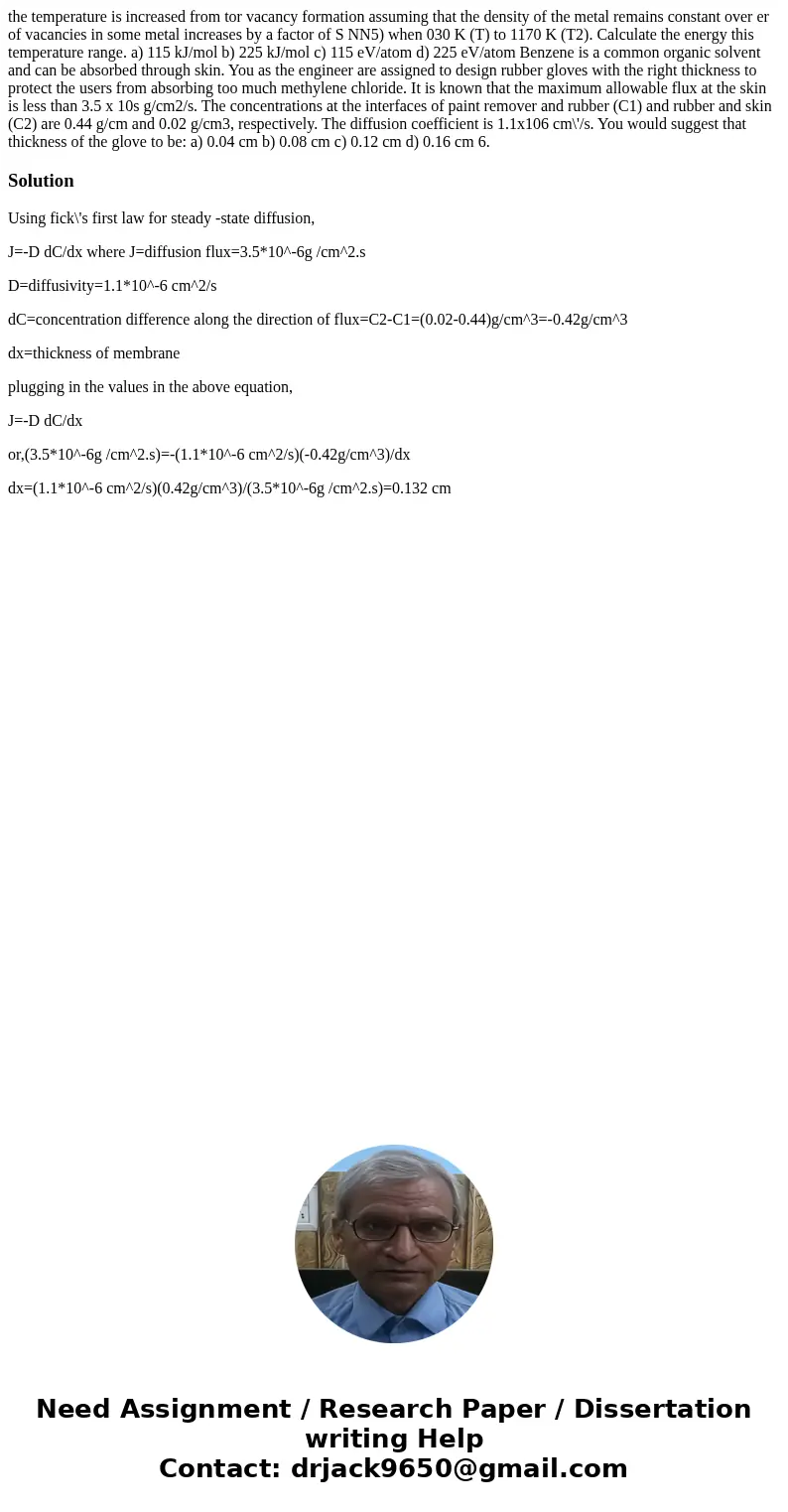the temperature is increased from tor vacancy formation assu
the temperature is increased from tor vacancy formation assuming that the density of the metal remains constant over er of vacancies in some metal increases by a factor of S NN5) when 030 K (T) to 1170 K (T2). Calculate the energy this temperature range. a) 115 kJ/mol b) 225 kJ/mol c) 115 eV/atom d) 225 eV/atom Benzene is a common organic solvent and can be absorbed through skin. You as the engineer are assigned to design rubber gloves with the right thickness to protect the users from absorbing too much methylene chloride. It is known that the maximum allowable flux at the skin is less than 3.5 x 10s g/cm2/s. The concentrations at the interfaces of paint remover and rubber (C1) and rubber and skin (C2) are 0.44 g/cm and 0.02 g/cm3, respectively. The diffusion coefficient is 1.1x106 cm\'/s. You would suggest that thickness of the glove to be: a) 0.04 cm b) 0.08 cm c) 0.12 cm d) 0.16 cm 6. 
Solution
Using fick\'s first law for steady -state diffusion,
J=-D dC/dx where J=diffusion flux=3.5*10^-6g /cm^2.s
D=diffusivity=1.1*10^-6 cm^2/s
dC=concentration difference along the direction of flux=C2-C1=(0.02-0.44)g/cm^3=-0.42g/cm^3
dx=thickness of membrane
plugging in the values in the above equation,
J=-D dC/dx
or,(3.5*10^-6g /cm^2.s)=-(1.1*10^-6 cm^2/s)(-0.42g/cm^3)/dx
dx=(1.1*10^-6 cm^2/s)(0.42g/cm^3)/(3.5*10^-6g /cm^2.s)=0.132 cm

 Homework Sourse
Homework Sourse